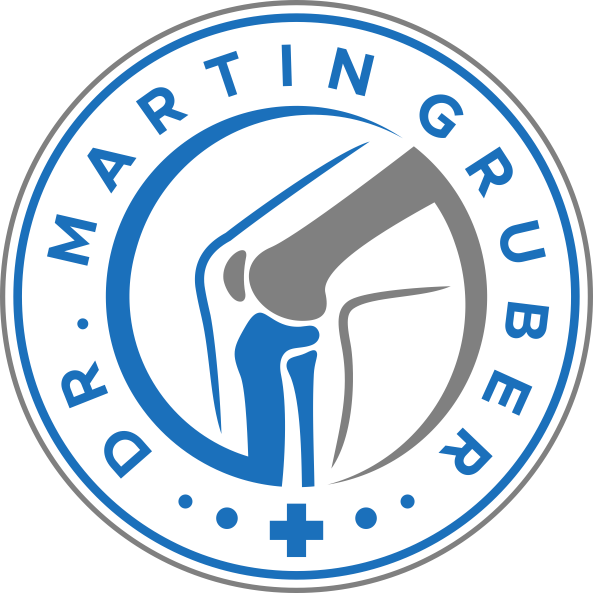The cruciate ligament – An explanation
In addition to the two menisci and the two collateral ligaments, the central components of the knee joint are the anterior and posterior cruciate ligaments. Its name comes from the anatomical course, both cross in the center of the knee joint. But what is the cruciate ligament and why is it so important for us? I will try to shed more light on these and other questions in this article.
OVERVIEW

What is the cruciate ligament?
The cruciate ligaments are the central pillars of stability of the knee joint. The two cruciate ligaments make the roll-slide mechanism of the knee possible at all. Both the anterior cruciate ligament (Ligamentum cruciatum anterius or often referred to as VKB, LCA or ACL) and the posterior cruciate ligament (Ligamentum cruciatum posterius or HKB, LCP or PCL) consist of taut, collagenous fibers and connect the thigh and tibia. The anterior cruciate ligament pulls from the insertion surface on the femur posterior-above-outward to that on the mock bone anterior-lower-inward.
In the literature, the ACL is often divided into two main bundles, the anteromedial (AM) bundle and the posterolateral (PL) bundle, with an intermediate bundle between the two.
Why is the cruciate ligament so important?
The anterior and posterior cruciate ligaments stabilize the knee joint during the entire range of motion, as their parts are taut in any position. This happens not only during sports, but also during everyday movements. However, stable cruciate ligaments are even more important in sports, and especially in competitive sports, where the knee is subjected to a much higher load. In addition to the ligaments themselves, well-trained muscles are also essential for further stabilization and support of the ligaments.
The anterior cruciate ligament also serves as protection for other structures in the knee; by guiding the outer femoral condyle to the tibial plateau, the menisci and cartilage are protected from destruction and wear.

What is the function of the cruciate ligament?
Together with both collateral ligaments, the cruciate ligaments hold the knee joint together and stabilize it by limiting forward and backward thrust and rotational movements, especially internal rotation. The anterior cruciate ligament is often considered the most important and most stressed ligament of the knee joint. It secures the tibia against forward displacement, limits lower leg rotation during rotation together with the posterior cruciate ligament, and supports the collateral ligaments. In addition to its function as a stabilizer, the ACL also plays an essential role in proprioception. There are many mechanoreceptors on the ligament itself that can be used to pick up information about knee joint position and then activate stabilizing muscle groups.
When does a cruciate ligament tear?
A cruciate ligament tear, especially an injury to the anterior cruciate ligament, is one of the most common injuries to the knee joint and is steadily increasing due to the rise in sports activities. In most cases, sports injuries are the cause of ACL ruptures. Sports with rapid changes of direction, acceleration and twisting motion, such as soccer, tennis or basketball, are particularly prone to cruciate ligament injuries, but by far the most ruptures occur in skiing.
The typical mechanism of injury is a combination of twisting and buckling, or more rarely, hyperextension of the knee joint. It tears when the knee joint is flexed, splayed and rotated outward, but the foot and lower leg are fixed and do not rotate with it. Forced flexion and internal rotation loads or lateral loading in terms of bow legs can also lead to a tear. Sometimes, injuries to the anterior cruciate ligament can also damage other structures in the knee joint; these are often concomitant injuries to the medial ligament as well as the medial meniscus.

How is a torn cruciate ligament treated?
A torn cruciate ligament can be operated on, but can also be treated conservatively in some circumstances. The type of treatment depends on the particular injury and the patient’s requirements and should always be discussed together with the patient.
In a conservative treatment approach without surgery, immobilization and stabilization of the knee joint with the aid of a splint are the first steps. In addition, intensive physiotherapy is of great importance to strengthen the thigh muscles and to stabilize the knee joint. The quality of physiotherapy and the cooperation and motivation of the patient are crucial for the stability and function of the joint after a cruciate ligament tear. Especially in physically active patients, but also to counteract increasing cartilage wear, surgery is useful.
The procedure is largely arthroscopic and thus minimally invasive. The timing of the surgery must be determined individually with the patient and depends on several factors. In surgical reconstruction, the patient’s own tendons are usually used for cruciate ligament reconstruction. In the vast majority of cases, the hamstring tendons (semitendinosus and possibly also gracilis tendon) from the back of the thigh are used; alternatives are the quadriceps tendon, patellar tendon or, in rare cases, a donor tendon (so-called allograft).
There are also different options for tendon fixation; common methods include metal plates, dissolving or non-dissolving screws, or regular metal screws.
The decision whether to operate or not, when to operate and in which way to operate should always be made in discussion between the patient and the orthopedist and, as mentioned, depends on various factors.
As a specialist with nearly 5000 knee surgeries , I am always available to answer questions related to ACL and possible associated injuries.
